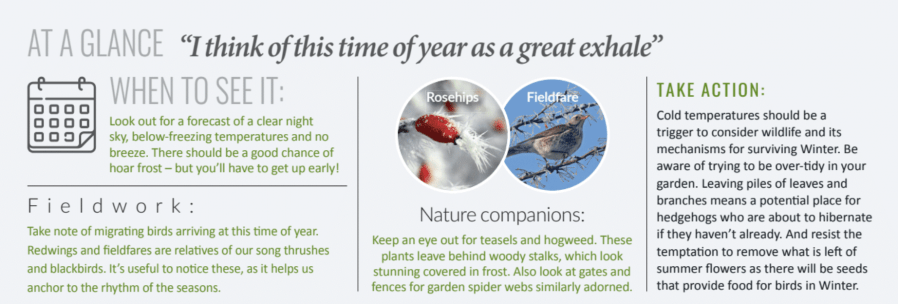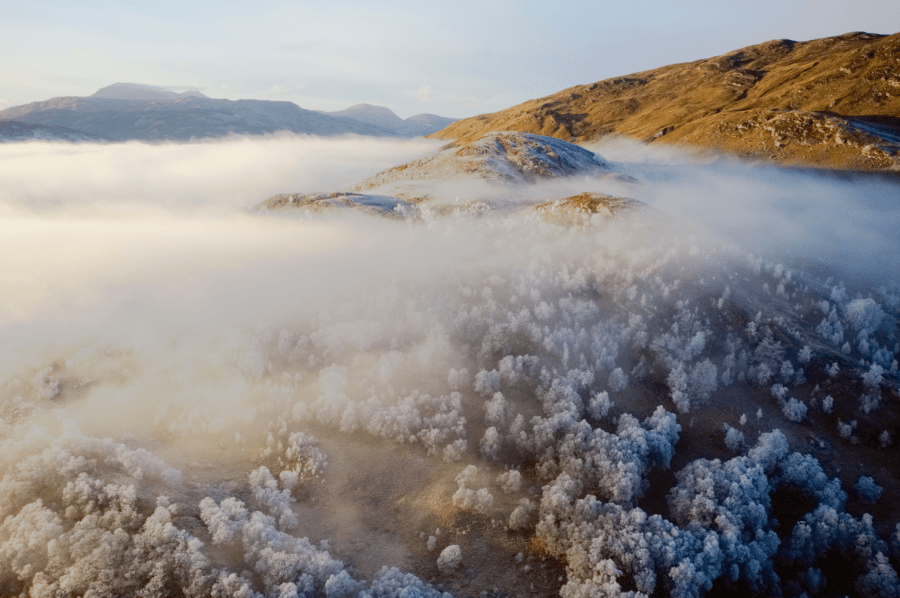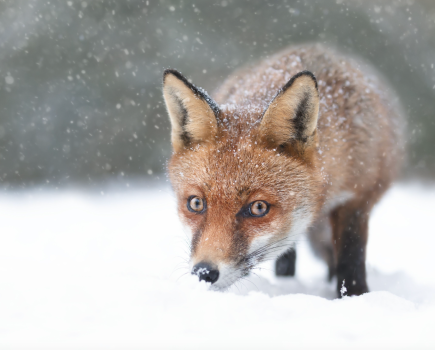Main image: The landscape of Loch Dochart coated in hoar frost | Credit: Richard Johnson / Shutterstock
On a clear and windless night, when the outdoor temperature is just right, a hoar frost can form. No matter how hard I tried to conjure up the right animal or plant to illustrate this time of year, I just couldn’t get the feeling of winterness out of my mind. The nostalgic echo of hibernation, the urge to hunker down, skeleton trees and the smell of thaw.
It might be jumping the gun for November, but I can’t be the only one yearning for the cold, crisp day when we’ve said goodbye to summer. Seasons tend to be worryingly unpredictable anyway, so I think it’s okay to be reminded over the coming months to look out for and appreciate one of nature’s best meteorological gifts.
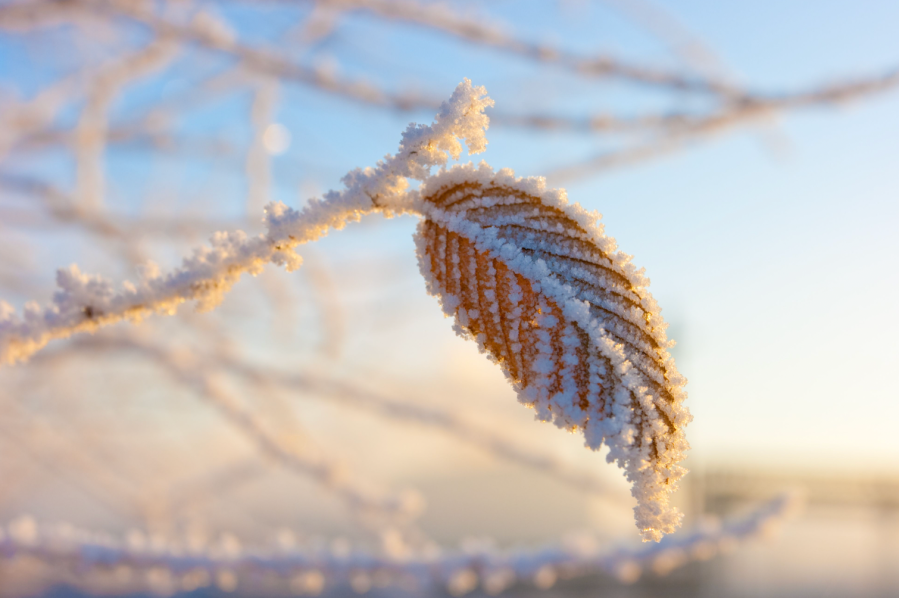
Hoar frost is a particular kind of frost. It forms when it’s a still, clear evening and the temperature is below 0℃. In these conditions, grasses, shrubs and trees also dip below freezing. So, when water vapour comes into contact with them it forms ice crystals, and ice crystals form on those ice crystals. This gives the whole environment a sparkling crystalline coating. The frost looks feathery and soft, almost as if we’ve had a dusting of snow.
This is the most enchanting way to view the countryside and I believe it’s worth factoring into your plans. We’re well accustomed to planning for weather. We consider temperature change, precipitation and wind, so you already know what you’re doing.
If the weather forecast shows the conditions are right, then you can prepare to wake up to meet hoar frost and rejoice at the most beautiful way to start your adventure. Go all out, make a flask of good coffee; it is the definition of being intentional about the time we spend outdoors.
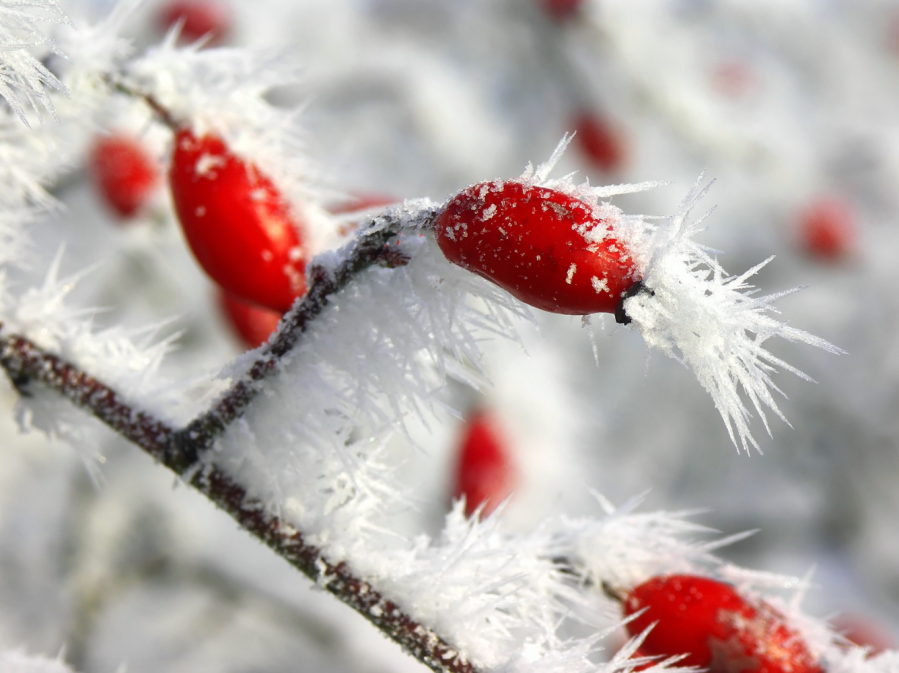
The frost will reveal shapes and patterns overlooked in their un-frosted form, whether its seeds or berries or the bootlaces we left outside. Look out for bright red Hawthorn and Rowan berries and Dog Rosehips coated in the morning frost. Not only do they look like sugared sweets, they’re the main food source of many birds, so it’s a really good way to observe winter thrushes, the Redwing and Fieldfare.
I think of this time of year as a great exhale. All the sun’s energy that is locked up in plants bursts out, like big deep breaths when reaching the summit or after a run. As water freezes it expands. Ice crystals take up more space than water in its liquid state. The cell walls of some plants cannot contain this expansion, so they literally explode when the water contained inside the plant freezes and the world softens and breaks down once again.
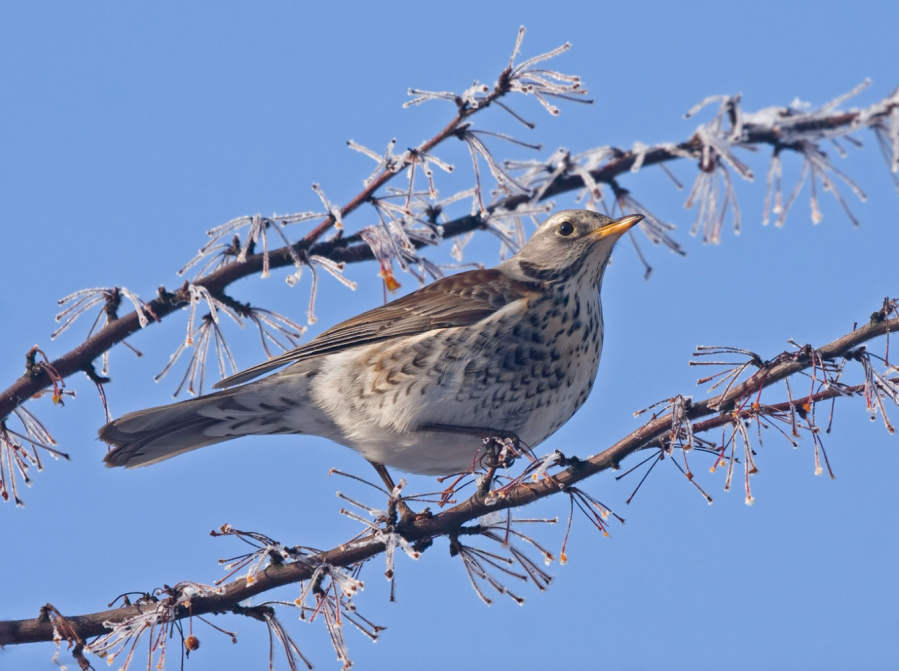
Notice that, as the day progresses, the winter sun tentatively warms the ground, the ice melts and so our plant world wilts, only leaving behind the most hardy structures. Ice crystals become tiny globes of water, and everything still sparkles.
We’ve all heard how each snowflake is unique, like a fingerprint. So are our excursions into wild places. You could attempt the same hike a hundred times, and just once see it through the lens of hoar frost on a sunny morning.
